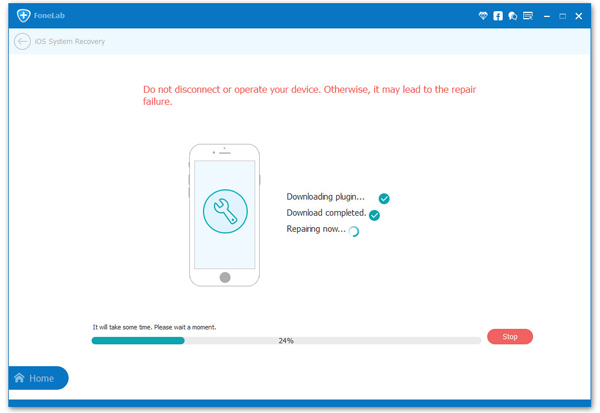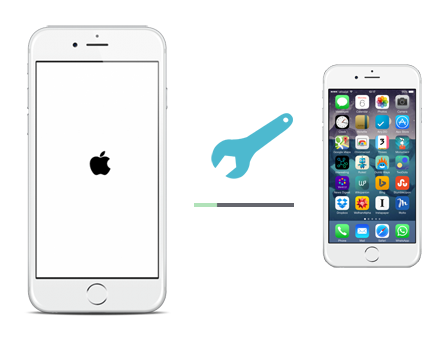By Selena KomezUpdated on October 12, 2019
[Summary]: Did you get a message that “your iTunes unable to process purchases at this time”? Don’t worry, please log out of Apple ID, disconnect wifi, restart your iPhone/iPad, and log in again via cellular network. In this article, you can also learn how to Fix bugs on iOS 13 and optimize iOS system to enjoy better iOS performance.
Recently, many iPhone users said that their iPhone has repeatedly appeared bugs: “the iTunes Store is unable to process purchases at this time,Please try again later“, and some even reach the frequency every two minutes.

The reason: This bugs is appear on some iOS 13 and iPadOS devices. This may be a problem with the Apple server, some problem in the iTunes Store server. Apple has yet to explain the cause of the bug.
Solution 1: Uninstall the iTunes Store App
Starting with iOS 10, the iPhone already supports uninstalling the app that comes with the system.
For iOS 10, iOS 11 and iOS 12, just press and hold the icon, and when it shakes, click on the small fork in the upper left corner to uninstall.
For iOS 13 users, short press to pop up the App secondary menu, click “Reorder App”, you can also trigger the uninstalled animation.
Solution 2: Exit Apple ID and Restart your iPhone
To fix this bugs, please exit Apple ID, disconnect wifi, restart your iPhone/iPad, and log in again via cellular network.
Note: After exiting the Apple ID, it will cause a problem, the Apple service cannot be used, such as iCloud and Apple Music, because we need to log in to the Apple ID to use these Apple services.
Do not connect to Wi-Fi after restarting the phone. In the state of 4G network, log in to the Apple ID again, which is a simple method to solve the problem.
Of course, if you want to completely fix this bug, the most common method is to update the perfect system. This might be the time for you to exercise a little bit of patience for Apple’s iTunes Support to release a fix. You can always check out the Apple System Status website for server status.
Apple has released the latest version iOS 13 system, which has encountered many bugs. According to Apple’s official update instructions, the iOS 13 system has added users’ favorite dark mode and new privacy protection features, which has increased the speed of software opening and is known as the best system to date. However, a large number of users after upgrading the iOS 13.0 official version of the system reflect the camera can not be used, software flashback, mobile phone fever and mobile phone power consumption and other issues. Subsequently, Apple made an emergency deployment and released three official versions of the system in an 11-day period to update the bugs: iOS 13.1 was released on September 25 and iOS 13.1.1 was released on September 28. The official version, released in the early morning of October 1 iOS 13.1.2 official version. In addition, on October 3, Apple also released the iOS 13.2 Beta1 beta.

Apple gradually closed the old version of iOS system verification after releasing the iOS 13 system. In the early morning of October 8, Apple officially closed the iOS 13.1 system verification. This means that users will not be able to upgrade or downgrade to that system version. Previously, Apple closed the system verification of iOS12.4.1 and iOS13.0 on October 5, and skipped iOS13.1 and chose to disable the system verification of iOS13.1.1. At present, only the iOS13.1.2 version verification channel is enabled, that is to say, iPhone users with iOS 12.4.1 and previous versions can only upgrade iOS13.1.2 or iOS 13.2 Beta1 after upgrading, and will not be able to downgrade after the upgrade. Go to iOS 12.4.1.

From September 20th, Apple pushed the official version of iOS13.0 system. In just 19 days, Apple has pushed four official versions of iOS13.0, iOS13.1, iOS13.1.1, and iOS13.1.2, and closed these four system verifications for iOS12.4.1, iOS13.0, iOS13.1.1, and iOS13.1. The iOS 13 system has also been dubbed the most closed version of the system ever, iOS 13, iOS 13.1, iOS 13.1.1 is called the shortest-lived version update in Apple history.
Some bugs on your iPhone and iPad? iPhone is stuck in Apple logo after iOS 13 update? iPhone stuck in headphone mode or DFU mode? iPhone stuck on recovery mode after iOS 13 update? iPhone restarts endlessly? Or iPhone is frozen for unknown reasons? Even iPhone screen is locked? No matter what situation your iPhone is facing, you can fix iPhone to normal and optimize iOS performance to make your iPhone works better.
This iOS System Recovery not only can help you fix your iPhone/iPad to normal state, but also can help you optimize iOS 13/12/11 to enjoy better iOS performance. It compatible with the latest iOS 13 and iPodOS, like iPad Pro, iPad Air/mini, iPhone 11 Pro Max/11 Pro/11, iPhone XS/XS Max, iPhone XR/X, iPhone8/8 Plus, iPhone 7/7 Plus, iPhone SE, iPhone 6s/6s Plus, iPhone 5s/5s/5, iPhone 4S/4, iPod touch and more. Let’s teach you how to fix bugs on iPhone and optimize iOS performance.
Step 1. Launch the iOS Toolkit on Computer
Click the above download button to download the iOS Toolkit on PC or Mac, then click the “iOS System Recovery”.

Step 2. Connect iPhone to Computer
Then, connecting your iPhone with the computer via Apple USB cable, the software will detect it, and then click “Start” button to go on.

Step 3. Select Fixing Mode
The standard mode installs iOS system by retaining device data. The advanced mode will erase data while installing firmware package or fixing the iOS system issues. Suggest that you go to the advanced mode only if the standard mode fails.

Step 4. Click Optimize
If you want to make your iPhone works more better, please optimize iOS system by click “Optimize” option go to next step.

Step 5. Select Firmware
The software will automatically detects your iPhone and displays available firmware package, please select the latest firmware package for your iPhone device. This iOS system recovery is easy to use and safe enough to install iOS firmware and avoid data loss.

Step 6. Download Firmware Package
Begin downloading firmware package and install it to your iPhone, iPad or iPod Touch device.

Step 7. Install IPSW File and Optimize iOS System
After downloading the firmware package completed, the iOS System Recovery will verify the downloaded firmware package and install on your iPhone, no data loss at all.

After optimizing iOS system performance complete, your iPhone will restart again, you will find your iPhone runs more smoothly that before.
More Features:
There are three main function in iOS Toolkit: iOS Data Recovery, iOS System Recovery and iOS Data Backup & Restore, it can help you protect your iOS data and optimize your iPhone/iPad/iPod, making your iPhone runs more smoother.
iOS Data Recovery: Recover lost contacts, messages, notes, WhatsApp messages, safari history, photos and more data from iPhone/iPad/iPod, or from iTunes backups and iCloud backups.
iOS System Recovery: If your iPhone stuck on stuck in DFU mode, recovery mode, Apple logo, headphone mode, etc. This function can help you fix iPhone/iPad/iPod to normal state without data loss, as well as optimizing iOS performance.
iOS Data Backup & Restore: Backup and restore iOS data to your computer, or restore the bacups to iPhone, iPad and iPod touch selectively.
Prompt: you need to log in before you can comment.
No account yet. Please click here to register.
